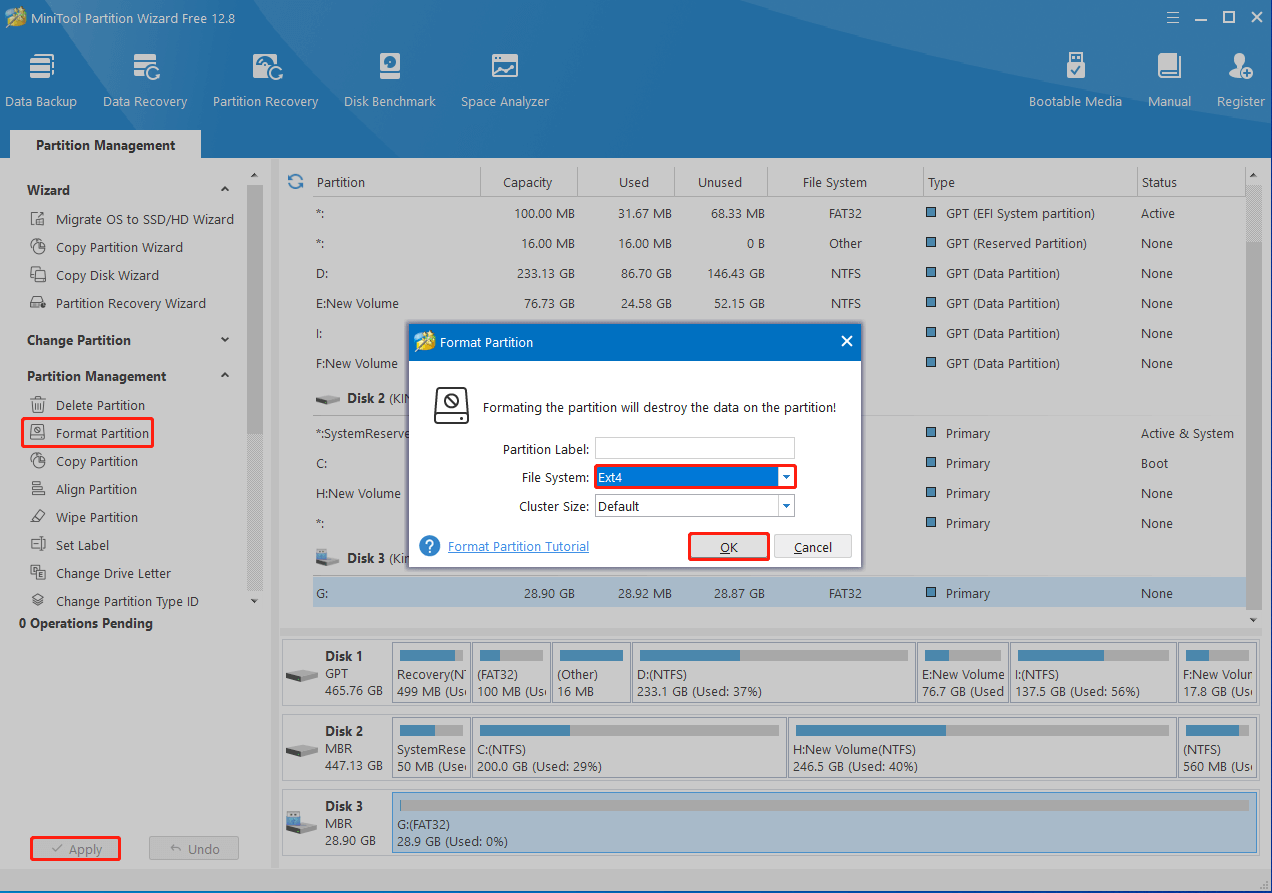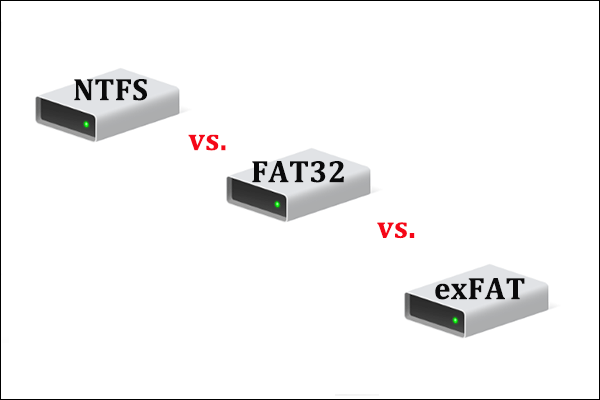What’s the difference between FAT32 and EXT4? Which one should you choose for different devices? In this post, MiniTool Partition Wizard provides a detailed FAT32 vs EXT4 comparison that may help you find the answers. Let’s go through this post!
FAT32 vs EXT4: Overview
What Is FAT32
FAT32 is a File Allocation Table file system that was first introduced with Windows 95 in 1996. It supports an increased number of possible clusters and can still reuse most of the existing codes, which makes it overcome the volume size limit of FAT16. Preceded by FAT12 and FAT16, FAT32 is the newest version of FAT and is popular with plenty of users around the world.
What Is EXT4
EXT4, short for Fourth Extended Filesystem, is a journaling file system for Linux. It was developed as the successor to EXT3. It’s backward-compatible with EXT3 and EXT2, slightly improving performance. EXT4 comes with many new advanced features, such as extents, persistent pre-allocation, delayed allocation, journal checksums, and so on.
FAT32 vs EXT4: Difference
Which file system should you choose for your hard drive, EXT4 or FAT32? To make a proper choice, you may need to know the difference between EXT32 and FAT32. Here we compare FAT32 vs EXT4 in multiple aspects. You can take a look.
Compatibility
The FAT32 file system is developed with high compatibility. It applies to various operating systems, including Windows, macOS, and Linux. However, EXT4 is primarily used on Linux-based operating systems. To get read/write capabilities for EXT4 on Windows or macOS, you may need additional software.
Performance
What’s the result of FAT32 vs EXT4: performance? Well, EXT4 offers better performance than FAT32. Its new advanced features like extents and delayed allocation, improve large-file performance and reduce fragmentation, especially when dealing with large files and high-capacity storage devices.
File and Partition Size
EXT4 is the winner when it comes to the EXT4 vs FAT32: file and partition size. FAT32 has a maximum file size limit of 4GB and a maximum partition size of 2TB. While EXT4 with the standard 4K cluster size can support partitions with sizes up to 1EB and files with sizes up to 16TB.
Reliability
How about EXT4 vs FAT32: reliability? FAT32 has no support for journaling, file permissions, encryption, or compression, which means unauthorized access or corruption can easily happen on this file system. On the other hand, EXT4 is a journaling file system that can effectively protect data from corruption and perform file system recovery quickly.
Bonus Tip: How to Execute the Conversion Between FAT32 and EXT4
You can format EXT4 to FAT32 with ease by using Windows built-in FAT32 formatters – Disk Management, File Explorer, and Diskpart. However, if you want to format FAT32 to EXT4, you are required to take advantage of a third-party EXT4 formatter. MiniTool Partition Wizard is a great choice.
It’s a comprehensive partition manager that enables you to format EXT4 to FAT32 and vice versa. Besides, it also allows you to partition/resize/clone hard drive, convert MBR to GPT without losing data, recover data from hard drive, and more.
To format FAT32 to EXT4 with MiniTool Partition Wizard, get it installed on your PC first and then follow the given steps.
MiniTool Partition Wizard FreeClick to Download100%Clean & Safe
- Launch MiniTool Partition Wizard to enter the main interface.
- Highlight the target partition and select Format Partition from the left action panel.
- In the pop-up window, choose Ext4 as the File System and then click OK.
- Finally, click Apply to save the change. When prompted, click Yes to confirm the operation.

Make Your Decision
Both FAT32 and EXT4 have their own pros and cons. You can learn their difference from the above content and then determine if you should choose EXT4 or FAT32 based on your needs. If you have any problems with FAT32 vs EXT4, you can leave a message in our comment part below.


User Comments :